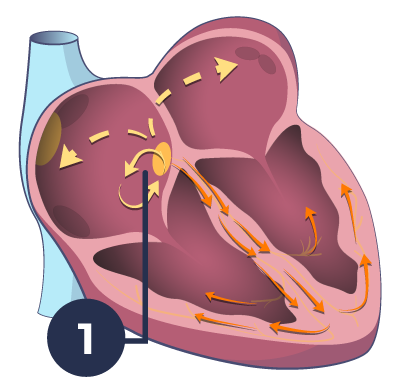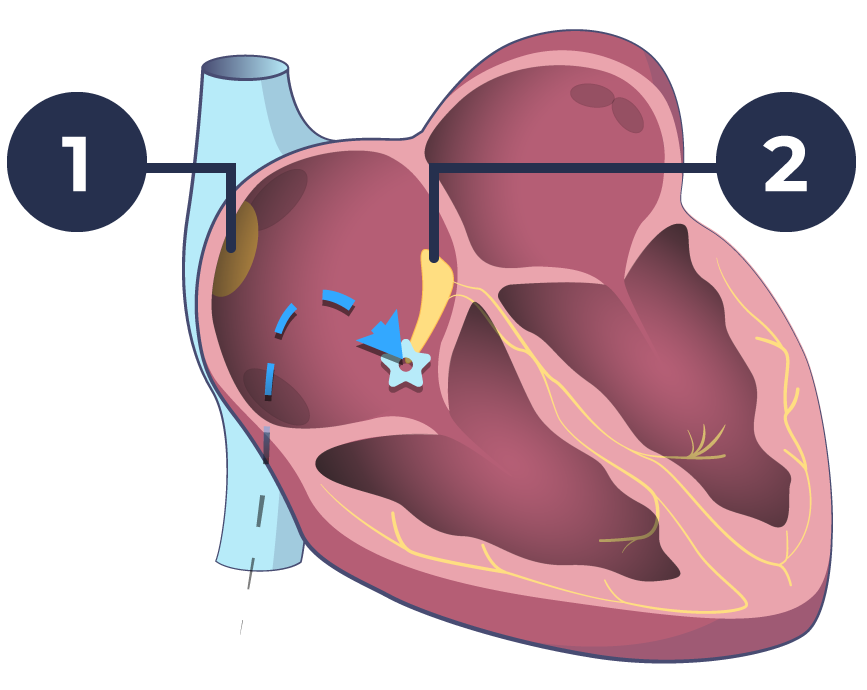AVNRT is an abbreviation for the painfully long condition called: “AtrioVentricular Nodal Reentry Tachycardia” (we’ll stick to AVNRT!). As with most forms of arrhythmias the heart rhythm of AVNRT patients often moves out of control in a type of carousel movement. Specifically, the carousel movement takes place around the transition between the right atrium and right ventricle. AVNRT is a common condition that is found in approximately 1% of the general population.

- Tachycardia due to AVNRT
How common is AVNRT?
AVNRT is around four times more common in women than it is in men although we do not yet know why. The symptoms of AVNRT often become apparent in young adulthood but it can be seen in children. In rare cases the symptoms will only appear as the patient becomes older. The symptoms involve seizures that start suddenly, from one heartbeat to the next, and then – after minutes or hours – disappear as suddenly as it started disappear. Patients will often feel a strong and rapid pulse on the side of their neck.
Is it dangerous and how is it treated?
You can give medicine for AVNRT, most often of the beta-block or calcium-block type. In many cases, however, I would recommend an ablation treatment as an alternative to long-term medical treatment. By ablation for AVNRT, some impulse conducting fibers are heated near the AV node. It causes healing in more than 95%.

Catheter ablation of AVNRT
- Sinus node
- AV node
Although the ablation is performed within the vicinity of the AV-node, the risk for damaging the impulse conduction from the atria and down into the heart chambers is well below 1%.
Typically if I assess that there is a higher risk than usual of damage to the AV node I will not proceed with an ablation procedure. This allows the patient more time to consider their options, and if they are certain they wish to take that risk they can do so with a clear head.
Ablation is typically performed under local anesthesia and the operation takes less than an hour.
AVNRT is an absolutely benign heart rhythm disturbance without any prognostic significance. Therefore, it is solely the symptom burden that should affect decisions on ablation or not.